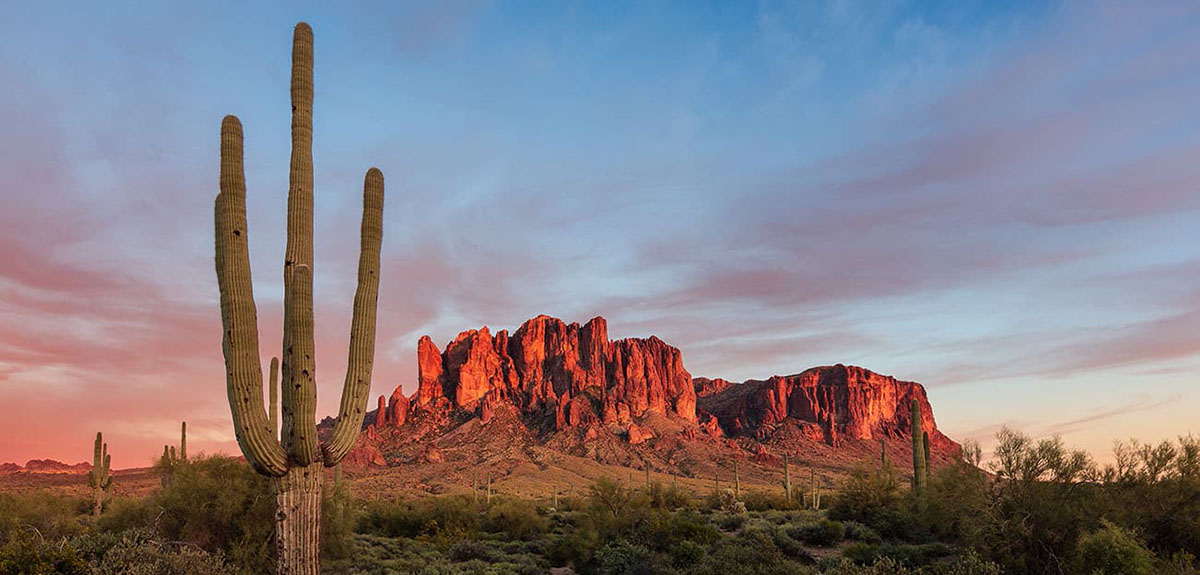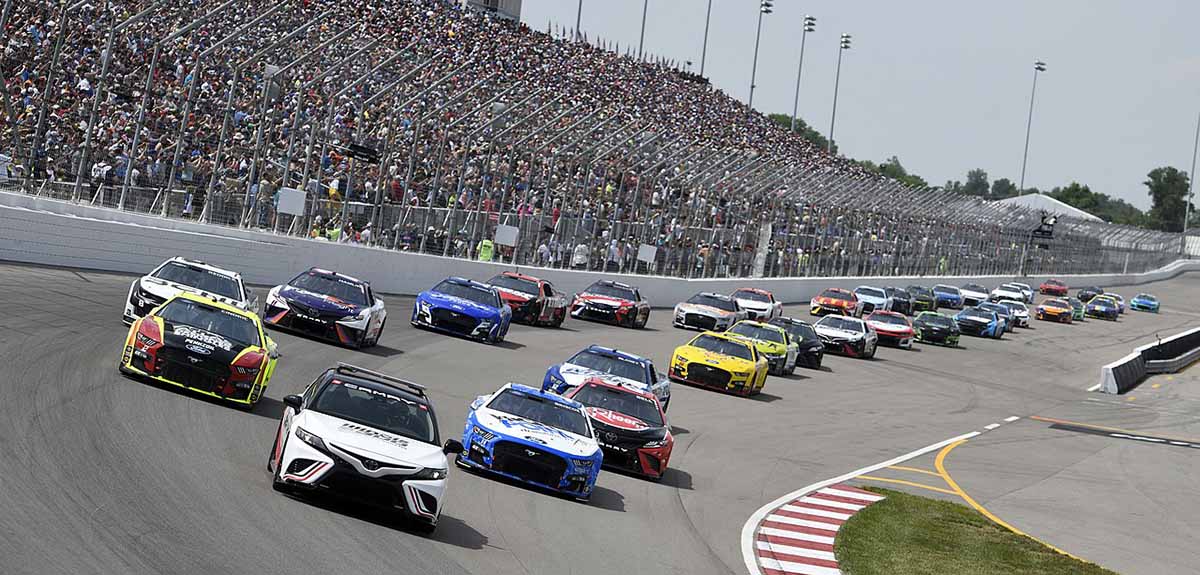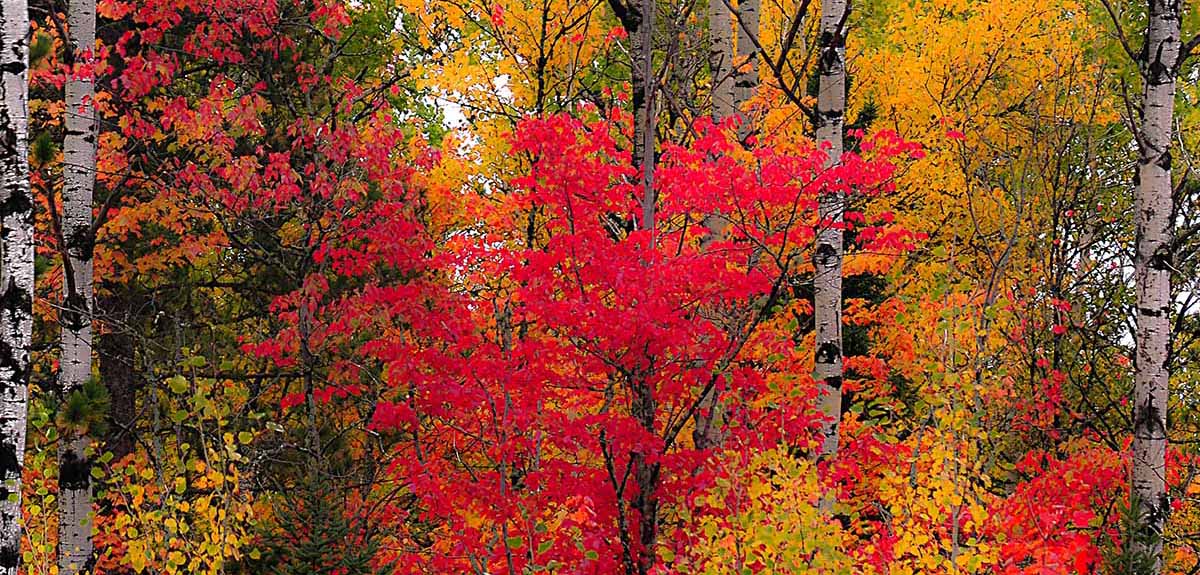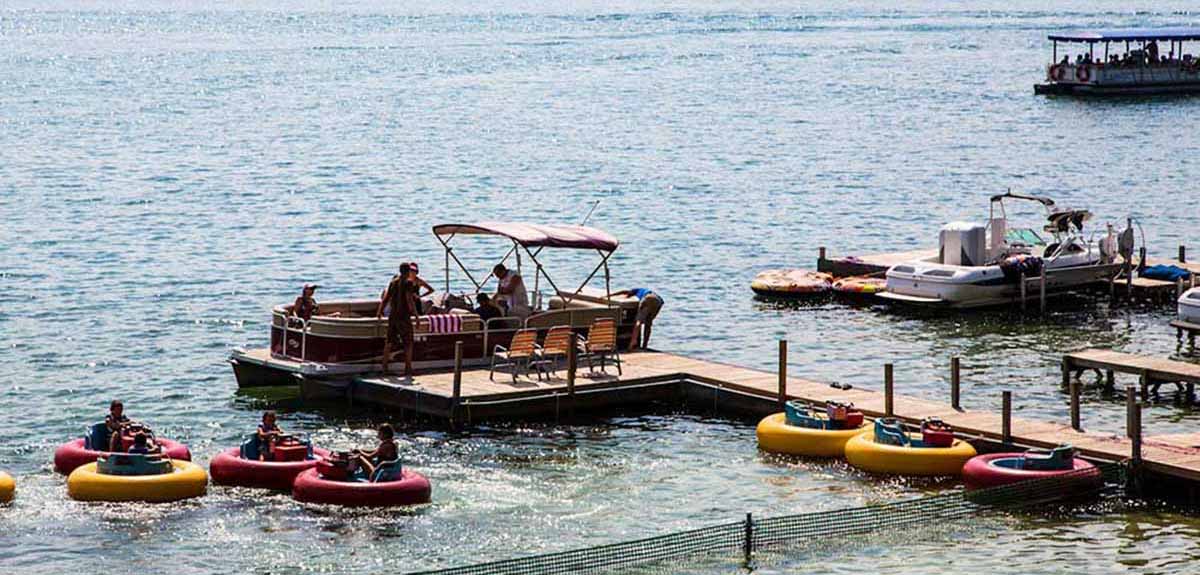Spring Wildflower Super Blooms and Where to Find Them
The Most Likely Places for a Wildflower Super Bloom This Spring
Image Caption:
For spring hikers, the hunt for wildflowers is a prime motivation for getting up and arriving at the trailhead to beat the crowds. If you have never experienced a super bloom, it is a great time to find one in your area.
The deserts of California are usually home to several wildflower super blooms, but the recent dry winter makes them less likely to occur this year. That being said, the locations where super blooms typically occur are still anticipated to offer above-average wildflower viewing in 2021.
In this guide, we are going to detail exactly what a wildflower super bloom is and we will point out several 2021 spring wildflower super blooms and where to find them.
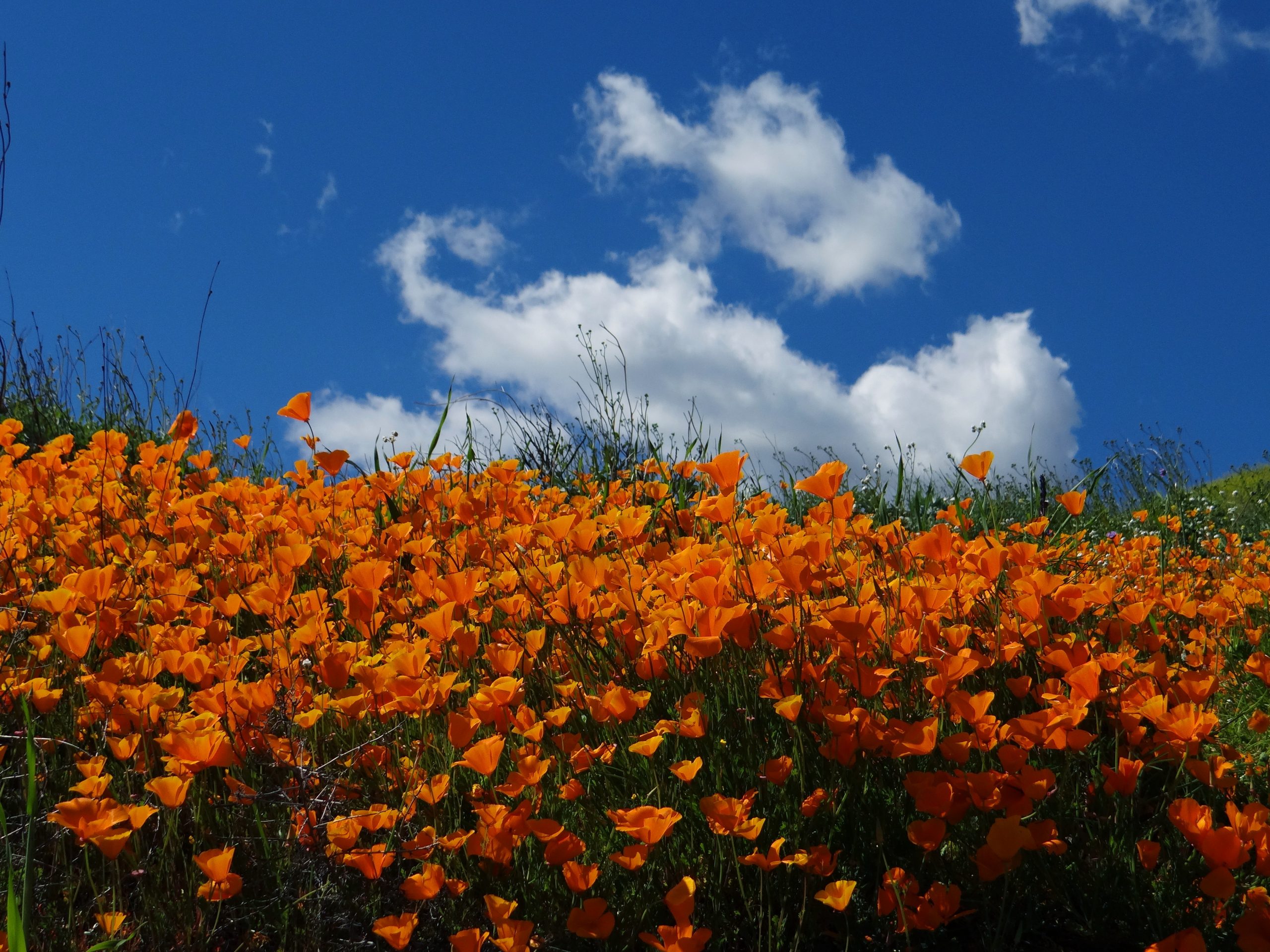
A field of Poppy wildflowers in Southern California.
What Is a Super Bloom?
While it is not a technical term, a ‘super bloom’ refers to an abundance of wildflower growth that exceeds the average level for a typical spring. A super bloom is actually a rare phenomenon that usually occurs in desert environments.
Super bloom occurrences usually correspond with exceptionally wet winters. Seeds that may have lain dormant in desert soil for years finally receive enough moisture to germinate and blossom in more abundant numbers than you would see in a typical year.
How to Know if it Is a Good Year for a Super Bloom
For starters, every park that sometimes experiences a super bloom will post information every spring. Park-specific websites are one of the best resources for finding out whether park scientists and officials are expecting a super bloom for the upcoming spring.
Aside from that, very specific conditions need to be met for these super blooms to occur. These locations must experience significant rains throughout December, January, and February. It must rain enough to soak the soil thoroughly so that the flowers can begin to germinate and flower when temperatures increase in March.
The hard part for scientists studying super blooms is that there is not a direct cause-and-effect relationship that signals a higher possibility of a super bloom. That being said, research does suggest that bigger spring wildflower super blooms are more likely in El Niño years.
Where to Find Super Blooms
The deserts of Southern California are some of the most notorious locations for spring wildflower super blooms. After a series of wet winters in these regions, many visitors came to expect super blooms as an annual event, instead of the rare phenomenon that they are.
That being said, parks throughout the state of California now see an influx of visitors every spring. In many cases, one can trace this increasing interest in the beauty and rarity of these spring wildflower super blooms.
Here are a few California parks known for super blooms:
Anza-Borrego State Park
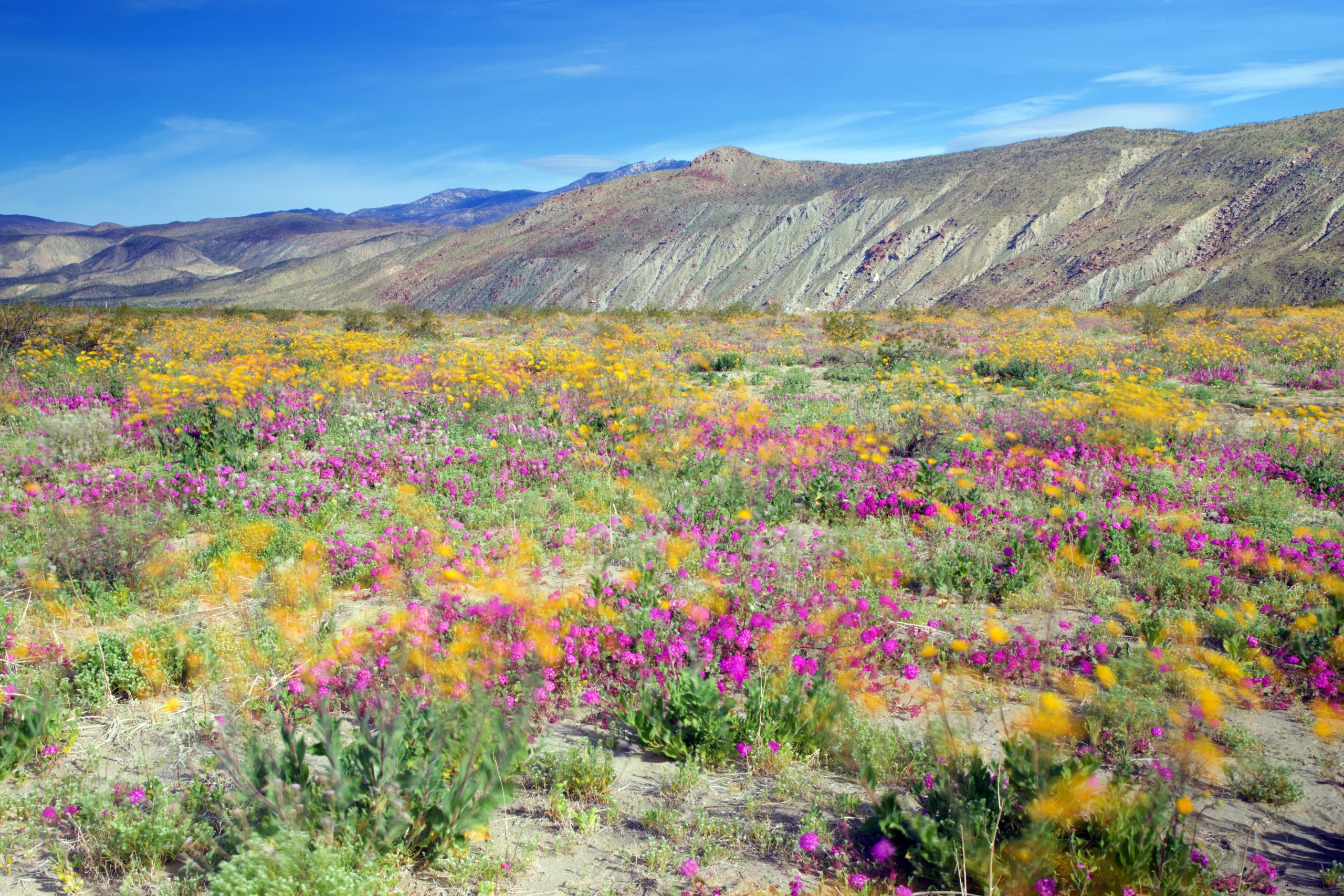
Wildflowers in Anza Borrego.
Anza-Borrego is California’s largest state park and the peak wildflower season in this desert park runs from mid-February through mid-May. The park spans about 600,000 acres in the Colorado Desert, which lies about 1.5 hours northeast of San Diego.
The park is home to a spectacular diversity of wildflowers, including desert five-spot, blooming cacti, sand verbena, desert lily, Orcutt’s woody aster, and many more. Annual wildflower blooms are typically visible along most of the canyon trails in the park, but this spot really ‘pops’ when it receives enough rainfall during the winter months.
Death Valley National Park
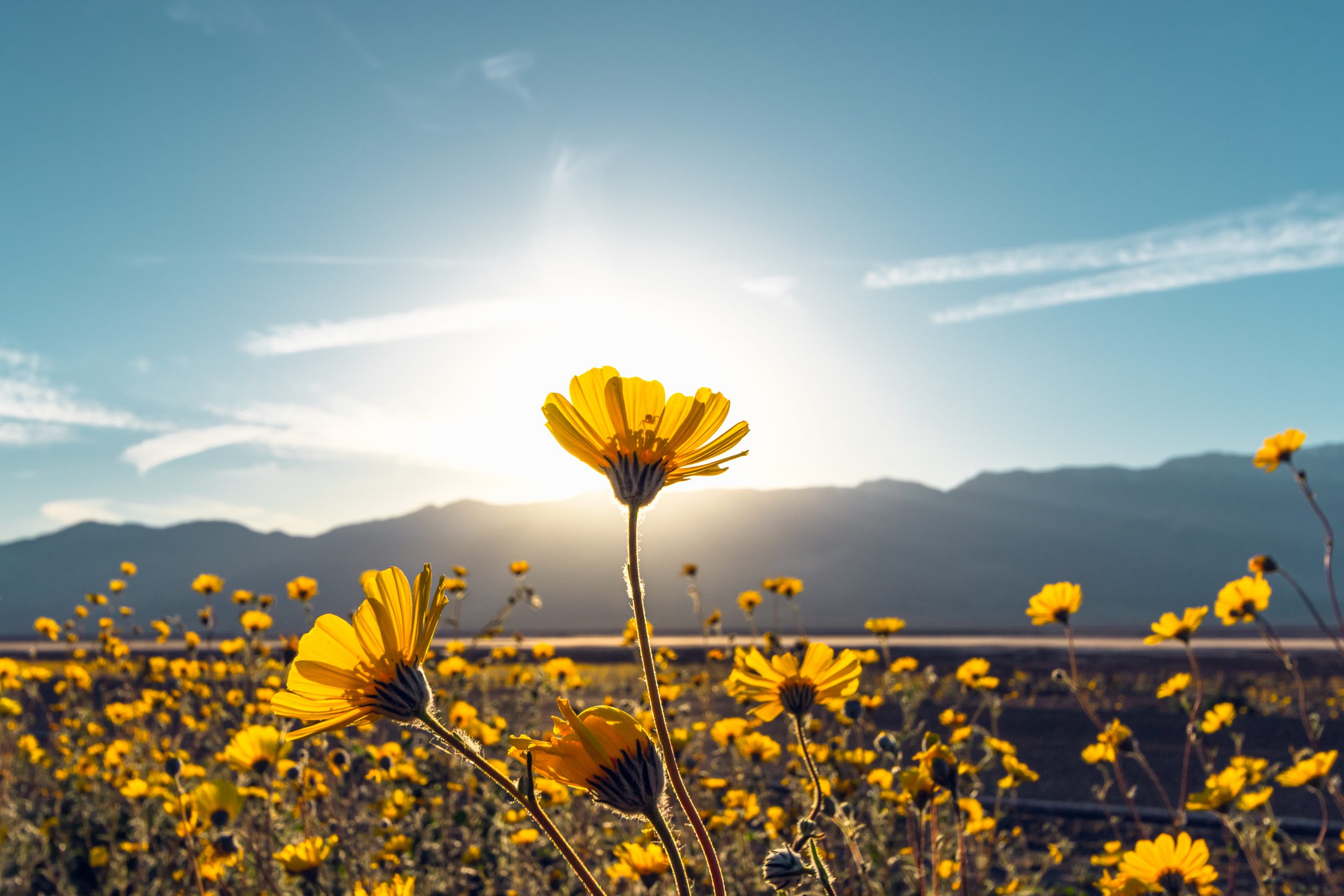
Super bloom in Death Valley National Park, California.
Death Valley is one of the hottest and driest locations in the U.S. It may not be the first place you would expect to find a super bloom, but the right conditions create the chance for the “holy grail of California wildflower events” to occur here.
Super blooms in the valley are extremely rare. On average, they occur once every 10 to 15 years. When they do occur, you can find spectacular wildflowers from the lowest valleys up to the highest elevations in the park.
In the valley, the wildflower season typically starts in mid-February and runs through mid-April. Above 5,000 feet in elevation, the blooms are a little slower to arrive and they last later into the summer. You may even be able to find wildflowers at the park’s upper elevations through June and July.
Desert gold is the most abundant and attractive wildflower in Death Valley. On a good year, it is impossible to miss them in their sweeping fields of bright yellow. Some other popular spring wildflowers in Death Valley include purple phacelia and the more fragile white “gravel ghost.”
Channel Islands National Park
You will need to charter a boat or hop on a quick ferry to access this remarkable island off the coast of Santa Barbara. The Channel Islands are a chain of five islands. Each offers a unique wildflower viewing experience, but the best time to visit is usually from mid-February through mid-May.
Yellow coreopsis is the most abundant wildflower on Anacapa, Santa Barbara, and San Miguel islands. On a good year, they can even begin to bloom as early as January. San Miguel is also home to an abundance of lupine and poppies while Anacapa is more known for its blooms of red paintbrush and island morning glory.
You will find additional blooms of lavender chicory and pale-yellow cream cups on Santa Barbara Island. If you are into rare wildflowers, head over to Santa Rosa Island to get a glimpse of the endemic butter-yellow, soft-leaved Indian paintbrush.
Mount Diablo State Park
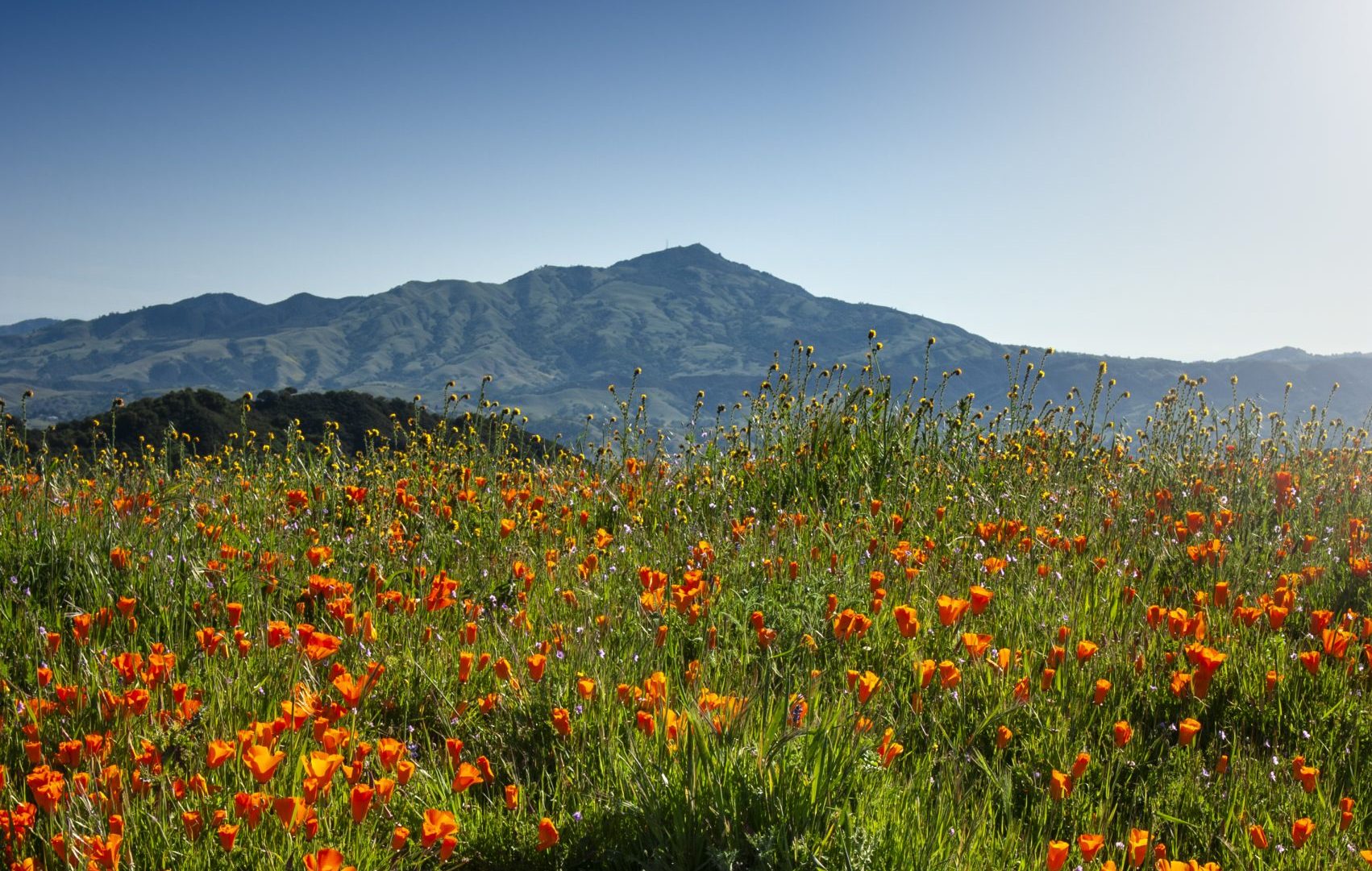
A spring field of California golden poppies with Mount Diablo in the background.
This state park in the Bay Area is a popular location for bikers and hikers year-round. From mid-March through late April (and sometimes early May), however, it is also a great spot to see blooms of California poppies, globe lilies, bush lupine, and many others.
The park lies about 40 miles east of San Francisco and its highest point reaches an elevation of 3,849 feet above sea level. Other wildflowers found in this park include blue skullcap, monkey flowers, and Fendler’s meadow rue. Due to its popularity, volunteer “flower finders” actually created a Google document that is regularly updated.
Lassen Volcanic National Park
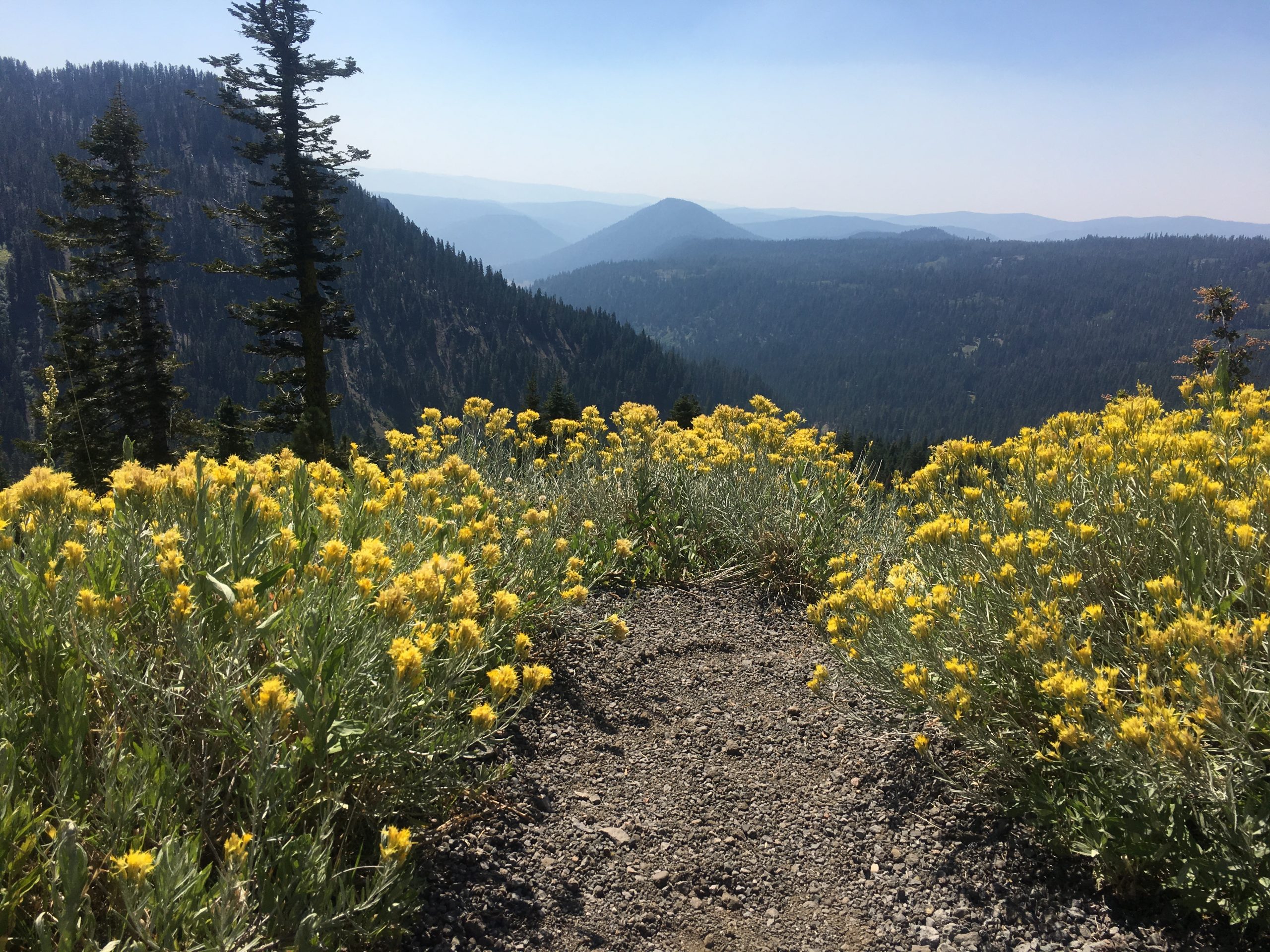
Wildflowers in bloom at Lassen Volcanic National Park in California.
Up in the northern part of the state, Mount Lassen’s snowmelt can sometimes last well into the summer. That means that the wildflower season up here is a bit later than in other parts of the state. Typically, you will find flowers starting to bloom in late May and these blooms will last through June or July.
In some years, however, late melting snows will cause wildflowers to remain in bloom into August at the park’s higher elevations. Common wildflowers around Mount Lassen include snow plant, western wallflower, mountain mule’s ear, lupine, and many others.
Find the Perfect Super Bloom
As stated earlier, most of the parks listed above have already released statements saying that they are not expecting a super bloom this year. Still, knowing about spring wildflower super blooms and where to find them will hopefully help you plan to see this rare phenomenon in the future.
Also, it’s worth noting that the term ‘super bloom’ is colloquial in nature. Scientifically speaking, there is nothing that makes California’s wildflower blooms head and shoulders better than blooms throughout the rest of the country.
The desert parks in California have simply gained the most notoriety for their abundance of wildflowers over the last few years. However, regardless of if you live in or plan to travel to California, you are sure to find the beauty of spring through wildflower blooms wherever you call home or wherever you’re currently passing through as long as you seek them out.

